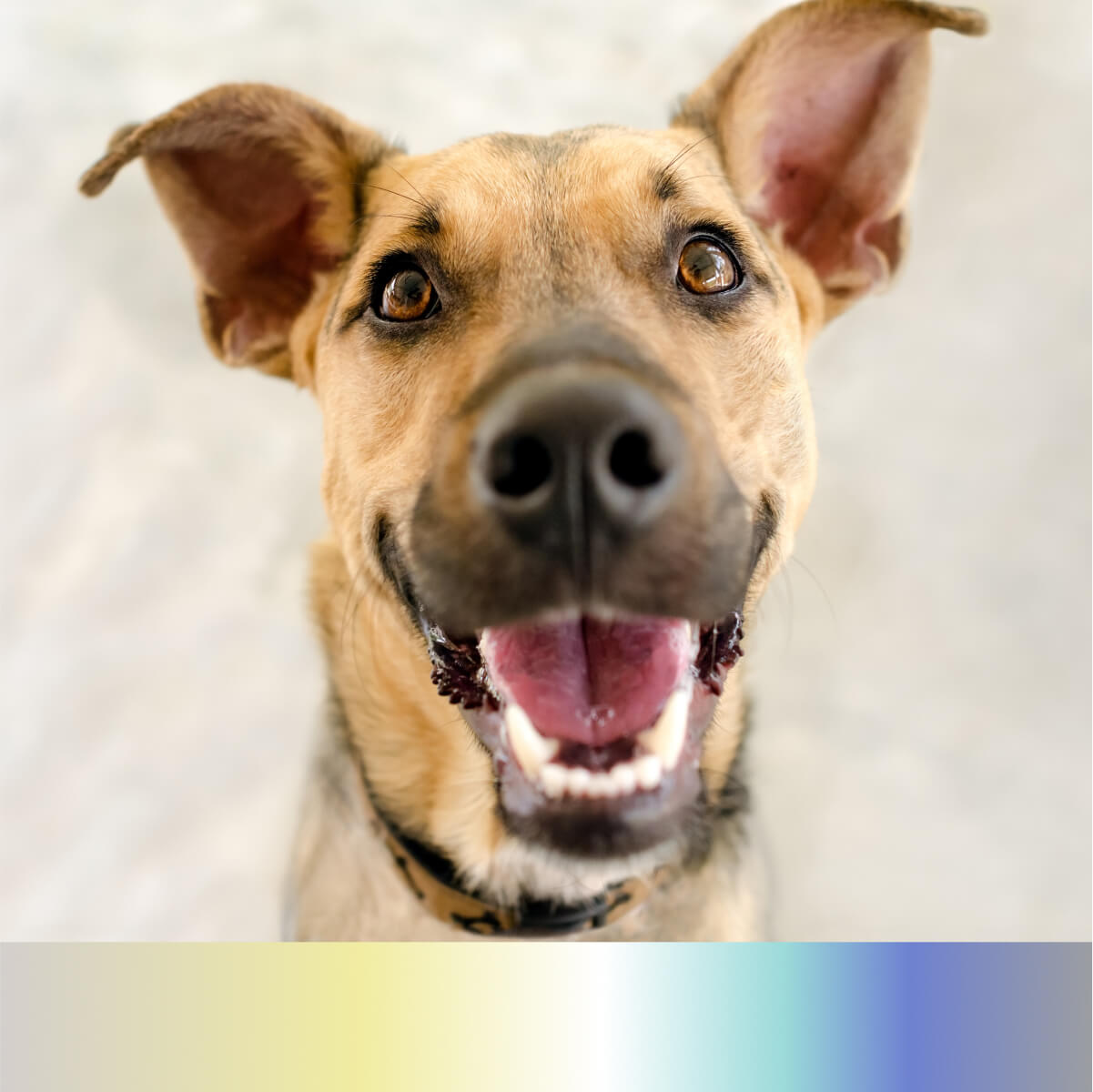As humans, we view the world in a full spectrum of colors, experiencing a rainbow of thousands of beautiful shades. But we have to wonder — what does color look like to our pets?
There’s a myth out there that dogs — and even cats — can only see in black and white, but this is untrue. Both animals’ eyes have a limited spectrum but can perceive more than just grayscale. Factors vary between the two species, but it all comes down to the two types of color receptors in their eyes — rods and cones.

Dogs
The idea that dogs can’t see any color was widely believed for decades. This was due to simple testing and behavior observations, most notably highlighted by Dog Week magazine and the 1937 manual Training the Dog. And in the 1960s, many researchers hypothesized that primates were the only mammals able to perceive color. But our ability to understand vision has progressed quite a lot since then.
In terms of the structure of the eye, humans are trichromatic, meaning that we have three kinds of cones in our retinas. Dogs are dichromatic and have just two types. This virtually eliminates their perception of reds, greens, purples, and various combinations. So, to put it simply, dogs see the world only in blues, yellows, and grayscale. That bright green tennis ball? It looks faded yellow. And that red couch? A comfy, brownish-gray.

Cats
Similar to dogs, cats’ vision is much more limited than ours, but there is a little more to the spectrum. Cats only have two photopigment receptors in their eyes (versus three in humans). However, they can pick up a wide variety of green hues. So, the color-detecting cones are most sensitive to blue-violet and yellow-green wavelengths. If you play with your cat using a red laser pointer, they don’t actually see the color, just the light itself.
It is not fully understood which shades of green cats can see versus dogs, though cats’ ancestors’ tendencies to hunt in the dark might have something to do with this. Regardless, there is a marginally broader spectrum in the eyes of cats than dogs.





